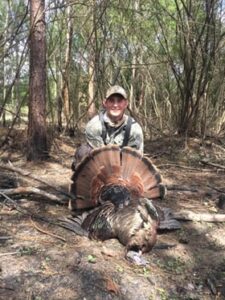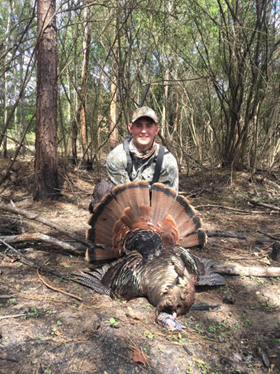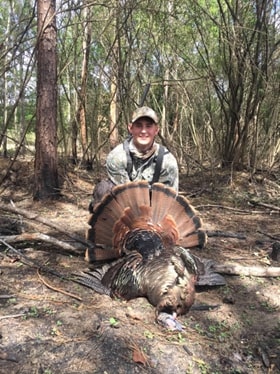Wild Birds and Controlled Burns
“Wild Birds and Controlled Burns”
After many days waiting, the sacred season of spring turkey hunting is almost here. Soon, there will be dedicated individuals waking up before daylight in hopes of hearing a gobbler sound off on the limb. If they are lucky, they might even get to catch a glimpse of him. On top of spring turkey debut, we are in the middle of prescribed fire season, where many landowners are dropping flame on their properties in order to reduce fuel, improve timber growth, and create better habitat for wildlife. Pine forests are dependent on fire to reach their full potential not only on size but for health of the overall ecosystem. Turkeys benefit from a freshly burned stand with improved observation, ease of movement, and feeding in the new growth that begins shortly after the burn is complete. These fires help keep understories of the timber stand from being thick and brushy while promoting the generation of grasses and forbs. If you already have a thick understory it would probably be best to conduct a growing season burn or two to have a better chance of getting rid of the woody brush instead of just top killing it. On the other hand if your understory is more open, then dormant season burns every year, or every other year, would do fine to maintain the habitat that is already there. If you are conducting a dormant or growing season burn on your property, one thing you might be considering is wild turkey and what is going on in their world. Turkey season falls during mating season and while you are intending on burning your woods, hens are laying eggs and sitting on nests awaiting the arrival of new poults. Hens begin nesting usually in late March to the beginning of May. Running a fire through it is usually not detrimental to her, or her instinct to be a mother. Oftentimes, if a nest is destroyed, a hen will renest then lay another clutch of eggs. Remember nests not only get destroyed by fire, but by raccoons, weather, opossums, snakes, hogs, logging operations, etc. Keeping this in mind, it is important for landowners to do whatever they can to help turkey survival rates. One way this can happen is to be aware of when the burn is taking place, along with reducing nest predators. This is not a call to stop burning from late March to early May. Instead, this is a reminder that if you are going to burn in designated timber stands with turkeys in them during their mating season, it might pay off to consider if it is best to hit the dormant season burns in February and the growing season mid June. This will be one less obstacle for a turkey to overcome. The poults hatched will be the gobblers you hunt in two-five years, and the hens will continue doing their best to keep the woods stocked with these mysterious, yet magnificent creatures.
If you are a landowner that is interested in learning more about burning your property, I would recommend becoming a Certified Prescribed Burn Manager. This course is very informative and covers all the bases. See the link below for Alabama information.
https://www.forestry.alabama.gov/Pages/Fire/BurnManager.aspx
*Also, if you are interested in learning more about the behavior of wild turkeys, I would recommend the book Illumination in the Flatwoods by Joe Hutto.
AGENT CONTACT INFO
Name: Brooks Milling
Phone: 251-656-2253
Email: brooks@truesouth.com




